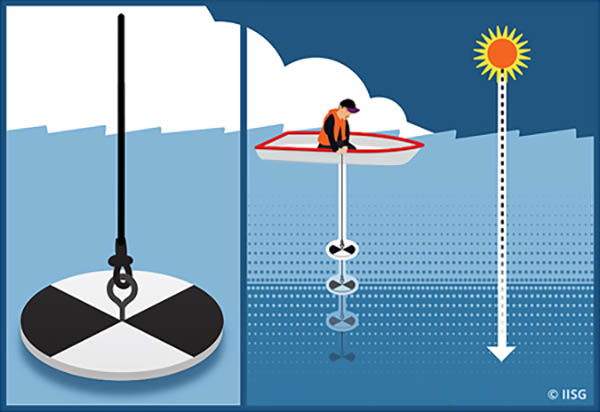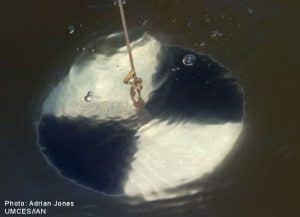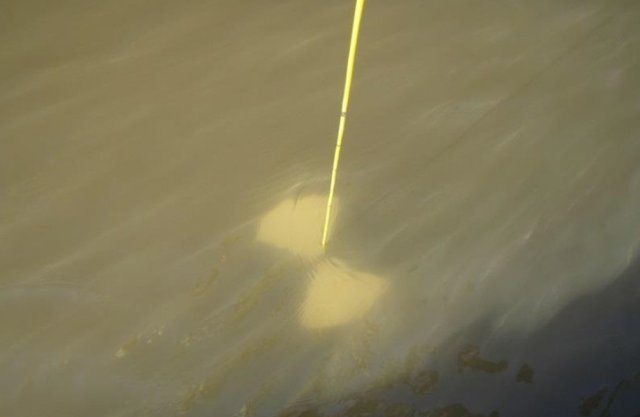Results 11 to 17 of 17
-
01-12-2025, 11:43 AM #11Senior Member

- Join Date
- Jun 2012
- Location
- Foley, AL.
- Posts
- 219
- Thanks
- 82
- Thanked 89 Times in 36 Posts
Well, I looked and it seems there is an app called AL Coastal Observing System but it seems to be locked and says to contact the owner. I don’t understand.
Remember Duane Allman
-
01-12-2025, 06:16 PM #12We are there! Let's go fishing!!

- Join Date
- Oct 2011
- Location
- Born, bred and someday dead in Midtown Mobile, AL
- Posts
- 10,220
- Thanks
- 8,007
- Thanked 13,611 Times in 4,020 Posts
- Blog Entries
- 6
Yeah, and just like that the telemetry from the site went down (at 1:06 this morning).
They should get it working again Monday.
Generally speaking, king mackerel are about our most sensitive fish to even slight increases in turbidity. They do not like silt in the water single digit numbers for sure.
Next would probably be spanish mackerel, then speckled trout I guess. They may be OK up to 10-15
Middle of the road species would be most sight feeders that are adaptable enough to feed in turbid water maybe in the 20s.
The least sensitive to turbidity would be your catfish and other bottom dwellers like drum, ground mullet, etc.
-
The Following User Says Thank You to Pier#r For This Useful Post:
-
01-15-2025, 11:53 AM #13Senior Member

- Join Date
- Feb 2017
- Location
- E Tn
- Posts
- 291
- Thanks
- 78
- Thanked 41 Times in 27 Posts
Well I ainít the brightest bulb in the pack but that looks like a wind speed sensor, hopefully they have a sensor in the water to gauge turbidity.
-
01-16-2025, 07:26 PM #14We are there! Let's go fishing!!

- Join Date
- Oct 2011
- Location
- Born, bred and someday dead in Midtown Mobile, AL
- Posts
- 10,220
- Thanks
- 8,007
- Thanked 13,611 Times in 4,020 Posts
- Blog Entries
- 6
They do, but everything went offline last weekend.
I made them aware, but they haven't got it restored yet.
-
01-19-2025, 09:26 AM #15We are there! Let's go fishing!!

- Join Date
- Oct 2011
- Location
- Born, bred and someday dead in Midtown Mobile, AL
- Posts
- 10,220
- Thanks
- 8,007
- Thanked 13,611 Times in 4,020 Posts
- Blog Entries
- 6
Copied this from the Little Lagoon Preservation Society Facebook page, by Dennis Hatfield:
Ever wonder why some water quality reports talk about water clarity while others measure turbidity? Even though the two measures might seem to be one and the same, there are important differences.
Water clarity is a measure of how much light penetrates though the water column Ė in other words how transparent the water is. Itís measured with a Secci Disk attached to a drop line with depth markings. The disk is lowered into the water until you can no longer see it and the length of line recorded. It provides a direct measure how far down into the water light can reach. However, the readings can be affected by weather conditions and sun position (thatís why our water quality teams always go out at the same time in the morning on testing days). Wind and cloud cover can reduce the visibility of the Secci disk, so those conditions are also noted.
Turbidity is determined by comparing a collected water sample to a set standard. It is a measure of the cloudiness or murkiness of the water that was collected at the point of collection. Whereas a Secci disk measures an entire column of water from the surface to the point of where it is no longer visible, water collected for turbidity tests are more collection point specific. Our experiences find turbidity tests to be more problematic than assessing water column transparency.
Water clarity is reduced by the presence of suspended solids like silt from runoff after a big rain or stirring up of the bottom after a storm. Overabundant populations of microscopic plankton, such as algae, usually due to excess nutrients can also make water cloudy. Suspended particles near the water surface absorb additional heat from sunlight, raising surface water temperature.
By conducting Secci measures on a regular basis over time weíve been able to establish baselines and identify trends of key physical attributes of Little Lagoon. Moderate levels of turbidity can indicate a healthy, well‐functioning ecosystem in which plankton flourish at a reasonable level to form the foundation of the food web, but high turbidity and low clarity are indicators or potential problems. To more fully understand what is happening in Little Lagoon we also assess key nutrients like Phosphorus, other key indicators such as water temperature and dissolved oxygen levels and conduct microscopic analysis to estimate phytoplankton populations.
Clear water is critical for the growth and survival of both plants and animals in the lagoon. Aquatic grasses and other plants grow best in clearer water because sunlight can reach deeper depths and support photosynthesis, which in turn helps oxygenate the water. Fish, crabs, and other aquatic animal life also rely on clear water to see whatís around them, catch prey, and breathe. Water clarity has been excellent at all five of the sites we monitor the last 6 weeks.
Interested in joining the Little Lagoon Water Quality monitoring team? Please contact Dennis Hatfield at dennishatfield17 at gmail dot com Team members receive hands on training and are asked to be available once per month for about 3 hours per outing. Our sampling program begins at 9AM on a sampling day and ends by about noon.
https://www.usgs.gov/.../wate.../sci...dity-and-water
https://www.nalms.org/.../the.../what-is-a-secchi-disk/
https://www.chesapeakemonitoringcoop.org/.../Water...
#littlelagoon #LLPS #waterquality


-
The Following 4 Users Say Thank You to Pier#r For This Useful Post:
-
Today, 02:14 PM #16Senior Member

- Join Date
- Oct 2011
- Location
- Upstream in WV
- Posts
- 441
- Thanks
- 1,320
- Thanked 512 Times in 152 Posts
I see where the Sea Lab has an ARCOS app now. At least on the Apple Store. DISL ARCOS
God bless!
-
Today, 03:57 PM #17We are there! Let's go fishing!!

- Join Date
- Oct 2011
- Location
- Born, bred and someday dead in Midtown Mobile, AL
- Posts
- 10,220
- Thanks
- 8,007
- Thanked 13,611 Times in 4,020 Posts
- Blog Entries
- 6
-


 27Likes
27Likes LinkBack URL
LinkBack URL About LinkBacks
About LinkBacks




 Reply With Quote
Reply With Quote



https://www.disl.edu/arcos/app/ https://www.disl.edu/news/2025/dauphin-island-sea-lab-launches-weather-conditions-app/
ARCOS on the Gulf State Park Pier